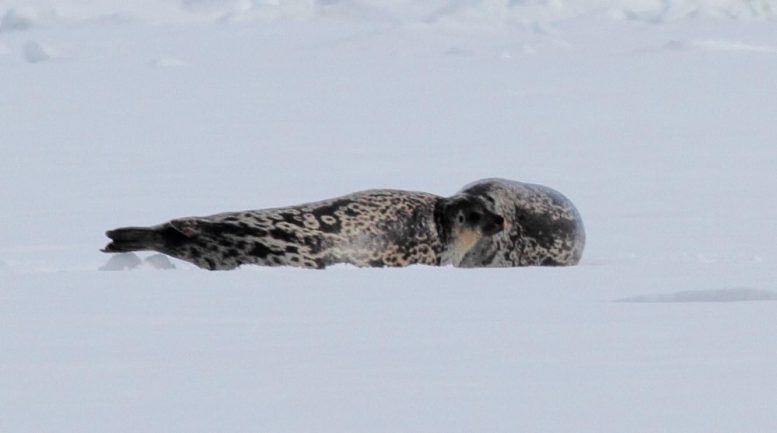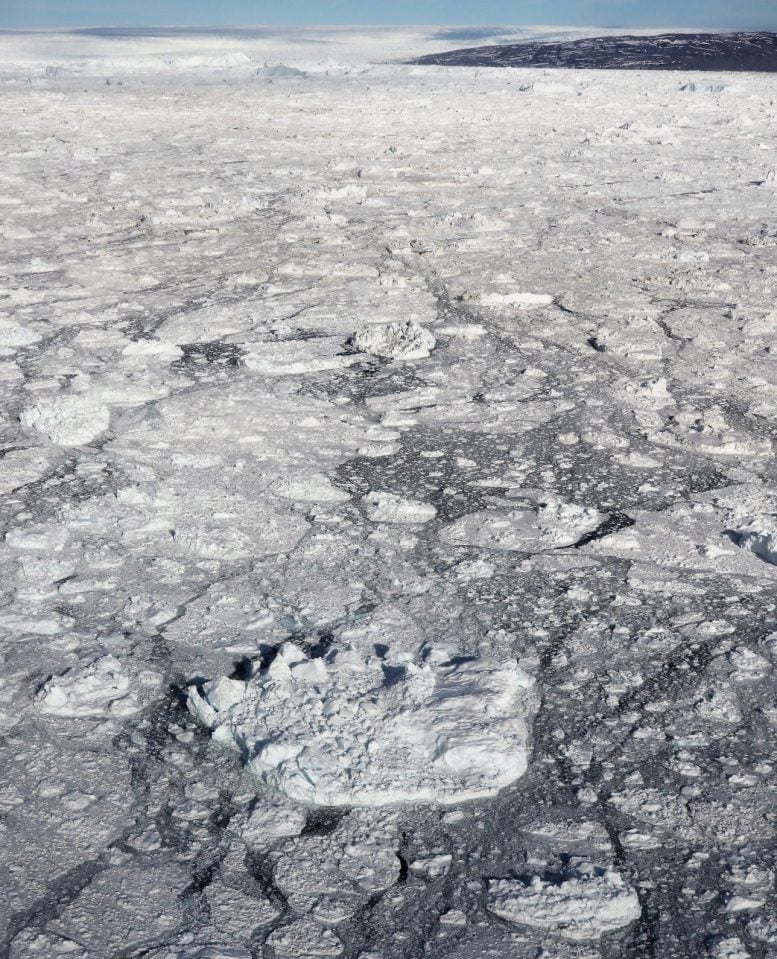
Local hunters in the Icefjord near Ilulissat are familiar with a special variety of ringed seal known as the Kangia seal. Distinct in size and appearance, the Kangia seal is considerably larger and boasts a notably different fur color and pattern compared to the common Arctic ringed seals. Recent scientific research has revealed that this distinctive seal has been genetically isolated from its Arctic counterparts for a long period of time – more than 100,000 years.
Exploring the Arctic’s natural wonders can be difficult. The extreme weather and vast distances often hinder researchers in their quest to uncover nature’s mysteries.
However, a research project, led by Greenlandic and Danish researchers, has now succeeded in describing a new type of ringed seal that lives in the Icefjord near Ilulissat in West Greenland; a unique natural area on the UNESCO World Heritage List.
The results have recently been published in the renowned scientific journal Molecular Ecology.

A small population
Over a number of years, the researchers together with local hunters captured seals in nets and mounted a small satellite transmitter on the seals’ backs. When the seals were up for air, the satellite transmitter sent a message about their location.
”We could see that the Kangia seals primarily stay inside the Icefjord. We were able to count the seals from a plane and therefore able to estimate that there are only approx. 3,000 of these special Kangia ringed seals,” says Aqqalu Rosing-Asvid, Senior Researcher at the Pinngortitaleriffik – Greenland Institute of Nature, and one of the researchers behind the study.

The small resident population is highly unusual compared to the typical Arctic ringed seal, which has an enormous population size and often travels thousands of kilometers around the Arctic in search of food.
Isolated for thousands of years
The researchers also took small tissue samples from the captured seals. The samples were sent for genetic analyses to uncover the seals’ DNA profile, and the results revealed that the Kangia ringed seals are genetically different from the typical Arctic ringed seals.

But where and how the Kangia ringed seal was isolated from the other Arctic ringed seals and why it acquired its new special biological characteristics is still a mystery.
Perhaps also special seals in other Arctic fjords
The study emphasizes that there is still much we do not know about the diversity of organisms in the Arctic and thus their possibilities to adapt to climate change and human activities.
“There are many other fjords in the Arctic that have not yet been studied in detail, and where the ringed seals may also have locally developed new genetic variants,” points out Rune Dietz, Professor at the Department of Ecoscience at Aarhus University, who also participated in the study.
Reference: “An evolutionarily distinct ringed seal in the Ilulissat Icefjord” by Aqqalu Rosing-Asvid, Ari Löytynoja, Paolo Momigliano, Rikke Guldborg Hansen, Camilla Hjorth Scharff-Olsen, Mia Valtonen, Juhana Kammonen, Rune Dietz, Frank Farsø Rigét, Steve H. Ferguson, Christian Lydersen, Kit M. Kovacs, David M. Holland, Jukka Jernvall, Petri Auvinen and Morten Tange Olsen, 19 October 2023, Molecular Ecology.
DOI: 10.1111/mec.17163
Never miss a breakthrough: Join the SciTechDaily newsletter.
1 Comment
I love your 🎨🎭🎭🎨 articles and research. I love your articles new species and animals being taken off the endangered and critical list. Also love your articles on Forest natural 💹📈📈💹 🪴🌵🌵🪴 growth and rejuvenation.